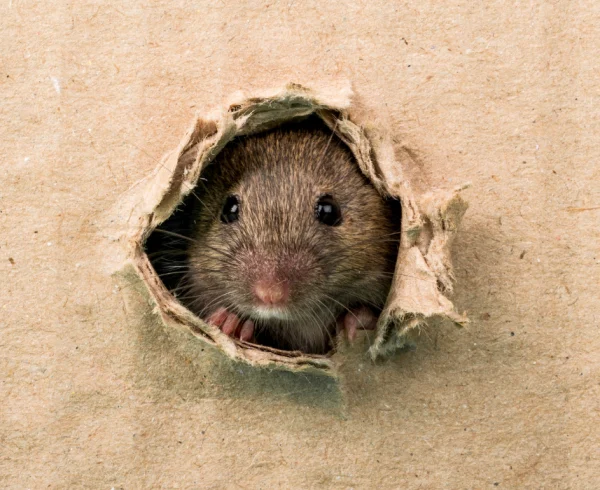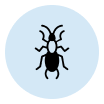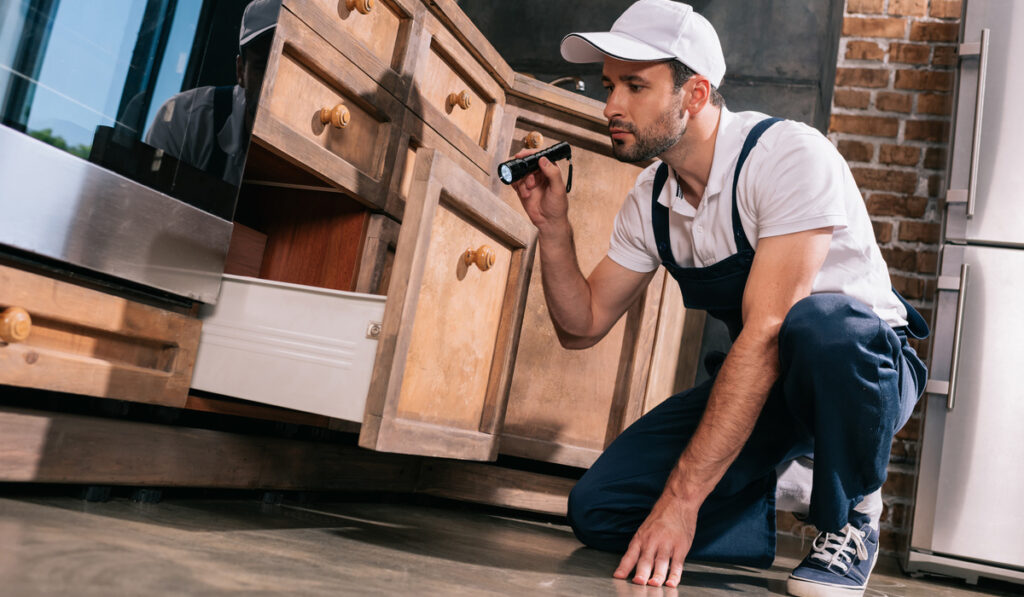If you’re hearing scurrying, squeaking, or clawing sounds coming from behind your drywall, chances are you’ve got a house mouse—or more than one—setting up shop inside your walls.
Mouse infestations aren’t just annoying; they can lead to chewed electrical wires, structural damage, and even the spread of parasites like fleas or bed bugs. For homeowners dealing with this kind of rodent problem, it’s important to act quickly and effectively.
Let’s walk through seven strategies that show you exactly how to get rid of mice in your walls—and make sure they stay out of your house for good.
Key Takeaways
- Small holes around your home are how mice get in, so sealing them is the first important step.
- Snap traps and bait stations work best when placed where mice are active, like walls or hidden areas.
- Cotton balls with peppermint oil and clean food storage help keep new mice away from your home.
- A pest control company can inspect your home and remove mice if the problem keeps coming back.
1. Identify and Seal All Entry Points
The first thing you need to do is figure out how these critters are getting in. Mice can squeeze through small holes, cracks, and gaps the size of a pencil eraser.
Check around your foundation, baseboards, closets, air ducts, and crawl spaces. If you spot signs of a mouse—like gnawing or feces—near an opening, that’s a clue.
Once you find these entry points, use steel wool combined with caulk to seal them up. This creates a tough, chew-resistant barrier that mice can’t easily get through.
2. Set Snap Traps Inside the Walls
Snap traps are one of the most tried-and-true DIY methods for tackling an infestation.
To reach mice inside your walls, you may need to cut small holes in the drywall and place traps in those hidden areas. Bait them with a little peanut butter—it’s sticky, aromatic, and irresistible to a house mouse in search of food.
Be strategic about where you place traps. If you’re hearing activity at night, such as squeaking or scurrying, that’s a solid indication of where to set traps.
Always wear gloves when handling mouse traps or dead mice, and clean up thoroughly to avoid contamination or lingering smells.
3. Use Bait Stations in Problem Areas
If snap traps aren’t cutting it, bait stations can help handle more persistent infestations. These are enclosed systems that house poisons, which mice consume before retreating to die—often inside your walls.
While effective, this can lead to unpleasant odors if dead mice aren’t accessible for removal. Professional pest control services can help if this becomes an issue.
Bait stations are best placed in crawl spaces, closets, behind storage boxes, and other hidden areas where they travel undisturbed. Be sure to keep these away from pets and children.
4. Try Mouse Repellents and Essential Oils
If you’re looking for ways to keep mice out of your house without using traps, natural deterrents like peppermint oil may help.
In fact, a study testing peppermint, wintergreen, and other essential oils found that rats spent less time near treated areas, suggesting these scents can influence their behavior. To try it at home, soak cotton balls in peppermint oil and place them near entry points, food sources, or baseboards.
While this won’t stop a full-blown mouse infestation, it’s a helpful tool to add to your rodent control strategy, especially if you’re sealing up small holes and cleaning up anything that might attract critters in the first place.
5. Use Live Traps for a Humane Catch-and-Release Approach
If you prefer a more humane route without using poisons, live traps are a solid alternative.
Place traps near baseboards, under furniture, or in areas where you’ve seen mouse droppings or signs of activity. Once caught, relocate the mice several miles from your property to prevent them from returning to your house.
Keep in Mind
If you don’t seal up entry points, other mice will likely move in. Live traps are only effective if used alongside strong prevention.
6. Eliminate Food Sources and Nesting Materials
Mice enter homes in search of food, water, and shelter. If your house has easy access to all three, your mouse infestation will likely grow.
Store food in airtight containers—not in cardboard boxes or flimsy plastic. Don’t leave pet food out overnight. Also, regularly clean up crumbs, spills, and any signs of feces around your kitchen and pantry.
Use sturdy bins instead of soft bags for storing blankets, paper, or other nesting materials. This makes it harder for mice to settle into your home.
7. Call a Professional Exterminator
If none of the above solutions are working—or the infestation is just too large—it’s time to call a licensed pest control company.
At Simple Pest Management, we specialize in rodent control that goes beyond setting a few traps. Our technicians inspect every inch of your property to identify vulnerabilities, seal off access points, place traps in high-traffic zones, and follow up to ensure your mouse problem is fully resolved.
We also handle attic sanitation, air duct inspections, and can even help identify damage caused by other pests like termites.
Our pest control services are available throughout San Diego, South Riverside, Sacramento, and West Placer counties, and we offer same-day or next-day service for new customers.
Give us a call to schedule your inspection.
 1st pest control service just $49. Must schedule service online.
1st pest control service just $49. Must schedule service online.






 You’re supporting a small, local business
You’re supporting a small, local business


